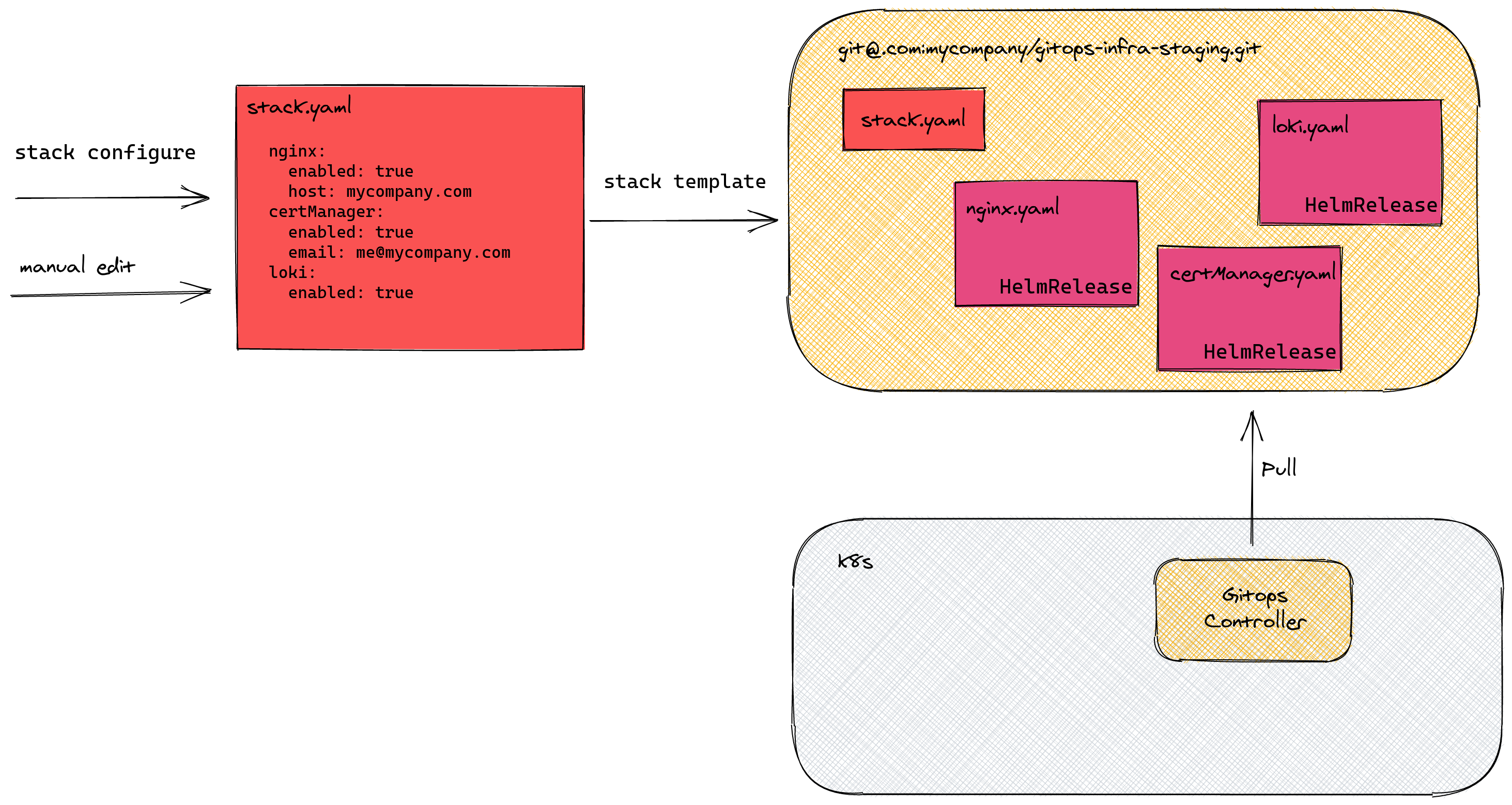Gimlet Stack Intro 
You can bootstrap curated Kubernetes stacks with Gimlet Stack.
You can install logging aggregators, metric collectors, ingress controllers, and more on your cluster with a few commands and without much knowledge of Helm charts and their configuration options
The components are delivered through a plain git repository with self-contained gitops automation
You will regularly get upgrades for the installed components from the stack curators
Design
Gimlet Stack is a command line tool that you can use to configure curated stacks for Kubernetes clusters.
Stack makers (or curators) maintain the stacks and end-users benefit from the curator's hard-earned best practices as they deploy the curated stacks on their clusters.
A stack instance - with its complete configuration - is stored in a git repository and delivered onto a kubernetes cluster via gitops automation. Gimlet Stack uses Flux V2 as the gitops controller to sync git changes to the cluster.
The full overview of the various artifacts and actors of Gimlet Stack:

End-user workflow
- end-users create a
stack.yamlfile with the full configuration of their stack: enabling required components and configuring them through a series of options- end-users can create the
stack.yamlmanually - or through the
stack configureCLI command which opens a browser based UI from the terminal
- end-users can create the
- users store the
stack.yamlon git git@.com:mycompany/gitops-infra-staging.git - users generate HelmRelease resources and other Kubernetes manifests from the components defined in the
stack.yamlwith thestack generateCLI command - users store the generated files in the same git repository as the
stack.yamlfile
- users push changes to git, and the bootstrapped gitops loop syncs it to the cluster.
- users can bootstrap the gitops loop with the
stack bootstrapCLI command
Stacks
Stacks are a set of Helm charts and Kubernetes manifests that are configured to work together seamlessly.
- stacks use the well-known community Helm charts
- stacks expose only a subset of helm chart values to users to limit the decision space
- stacks make it possible to use all chart values if people want the full chart feature set / optionality
- stacks create new chart values that group together multiple flags, and abstract them at a higher level. Eg.: stickySessions, realIP, HA
- stacks don't change the community charts, as upstreaming opinions will be a blocker every time. Instead, stacks wrap/compose the community charts
- stacks are able to deliver raw yamls to the gitops repo, configmaps, etc